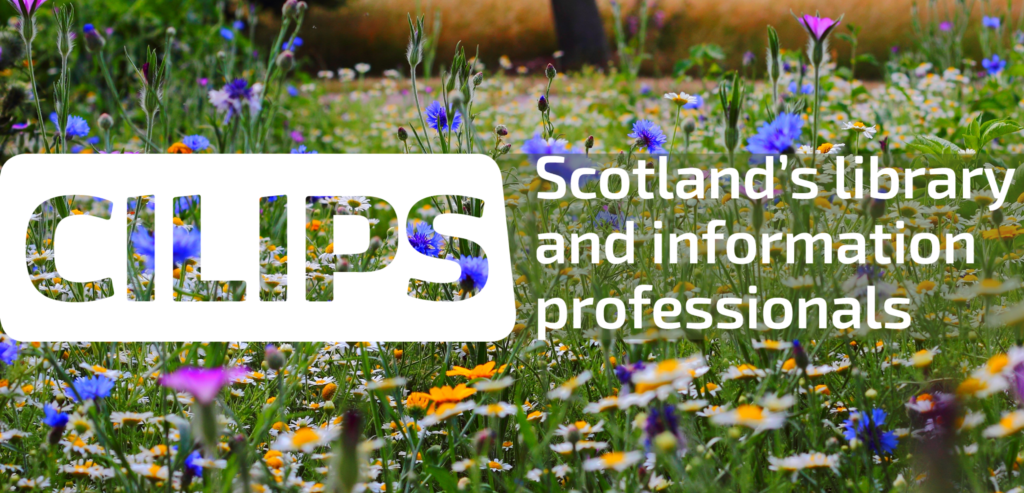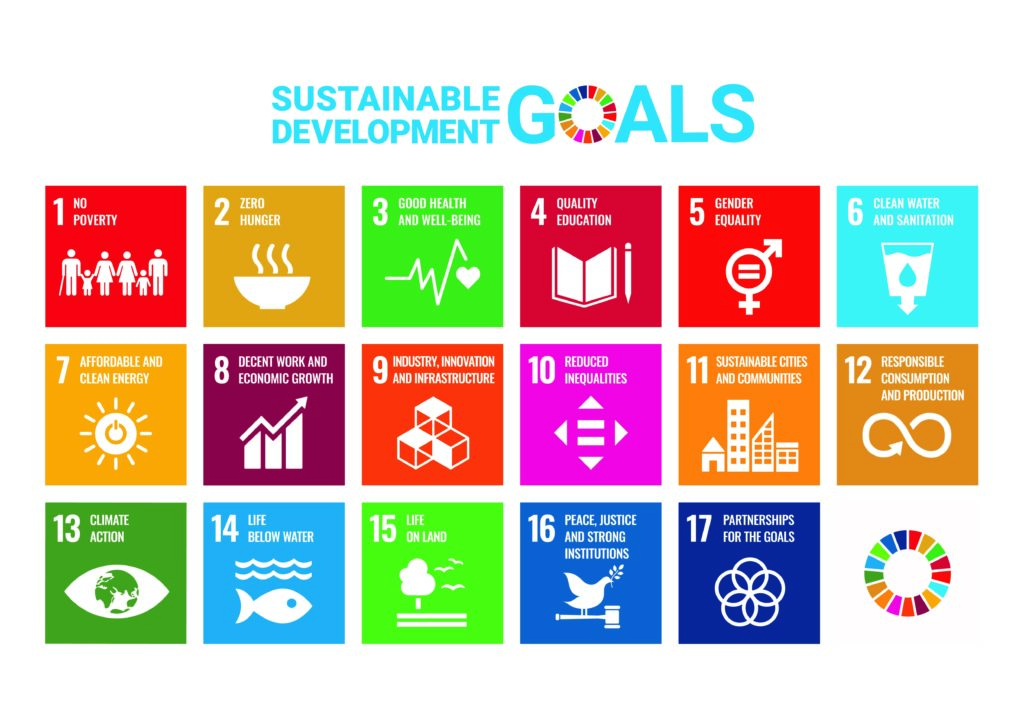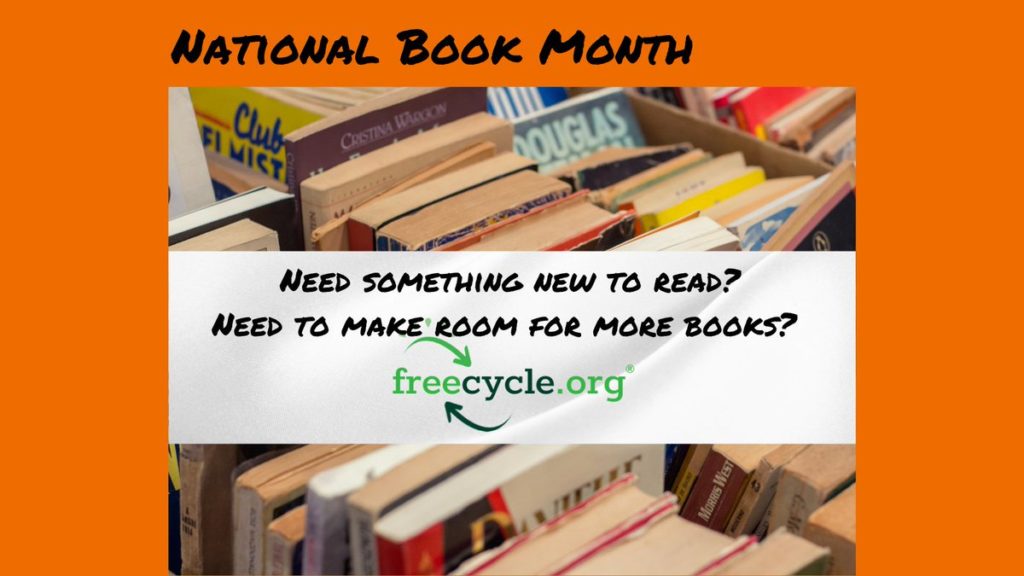#CILIPSGoGreen – Dalia García on The Green Library Movement
Category: #CILIPSGoGreen, Blog
From now until November when COP26 arrives in Glasgow, CILIPS will be sharing videos, links, recommended readings and more for members who want to grow their organisation’s environmental consciousness – recognising the key role that libraries can play in supporting their communities to take vital climate action.
Today, we’re hearing from Dalia García, whose MSc Information and Library Studies dissertation at Robert Gordon University focused on the Green Library Movement in Scottish HE Libraries. In the first post of this two part blog series, Dalia introduces the Green Library Movement, tracks its growth on both sides of the Atlantic, and articulates why it is so critical that libraries of every sector ‘go green’.
Back in 2019, the topic of environmental sustainability within UK libraries proved to be quite obscure and not much information was readily available, so I decided to base my dissertation on it while studying the MSc Information and Library Studies at Robert Gordon University. My research was focused on the Green Library Movement in Scottish Academic Libraries but some of the work can be expanded to apply to most libraries.
Luckily nowadays, most institutions are more aware of green issues, and that makes things a little easier for those trying to make a difference in the field. As the movement gains momentum, and hoping to take advantage of this and add to it to keep it going, I’ll share some snippets that may be interesting for you from the 63 pages of my research!
The Green Library Movement
Being sustainable is a different concept to being green; both concepts need to be defined to justify the use of one or the other. Sustainability is the point where someone has zero impact on the ecosystem, a holistic effort that is dependent on many factors, and that is why sustainable development combines economic, environmental and social factors, as the United Nations tell us. These dimensions cannot work without each other, as can be appreciated through G. Chowdhury’s framework for the Social Sustainability of Digital Libraries:
This interconnectivity is the reason why the United Nations has put together the seventeen Sustainable Development Goals (SDGs) we are familiar with, touching all of the three dimensions. As we all know, our approach must be holistic:
Being green does not mean being sustainable; being green means working towards sustainability: it is an active and conscious process working to someday reach that point when you have zero impact on the environment. As McBane, Mulford and Himmel (2010) put it:
‘Being green is constantly evaluating the impacts of your actions, and making choices that factor in the impact of the environment, and therefore your continued ability to rely upon it to provide for your needs and assimilate your waste. The less negative an impact on the environment the total sum of your choices creates, the greener you are.’
Back in 2008, Monika Antonelli was already sure that ‘communities need libraries and librarians to act as role models for sustainability by providing accurate information on all manner of green topics, from alternative building practices to renewable energy options. The time is also right for librarians to support and continue to grow the Green Library Movement’.
Antonelli’s ‘Green Library Movement’ literature review clearly explains how the Green Library Journal: Environmental Topics in the Information World came to be in 1991, thanks to workers and librarians from the Green Library in Berkeley, California, and University of Idaho Library in Moscow, Idaho. This library journal has been crucial for the development of the Green Library movement as it quickly became leader of international environmental issues publishing. The American Library Association (ALA) was also really important for the growth of the project from the very beginning. In 1989, they created the Task Force of the Environment (TFOE) on the 20th Anniversary of the first Earth Day, and ever since they have always encouraged libraries to get on board with sustainability matters. The objectives of the organisation were:
- To make librarians and other more aware of diverse environmental information sources.
- To recognise environmental concerns within libraries and seek solutions to them.
The amount of events, conferences and courses the TFOE has organised since is quite substantial. In 2006, US and Canadian colleges and universities also made a deal towards promoting sustainability in all sectors of higher education and funded the Association for the Advancement of Sustainability in Higher Education (AASHE), an equivalent to the Environmental Association for Universities and Colleges of the UK and Ireland (EAUC) registered in 2004.
In North America, the Green Library Movement has had great impact, and the wave is reaching Europe: currently accelerated because of the COP26 Conference in Glasgow and the latest IPCC report. We can see by the wonderful amount of examples and resources gathered here on in #CILIPSGoGreen that the tide is slowly shifting towards a consistent movement, hopefully unstoppable after COP26 has passed.
Many public libraries and institutions are forming sustainability committees and turning to activism. Most universities in the UK currently have at least one active Twitter account dealing with environmental sustainability. Some of the most active ones with greater impact due to their number of followers are: University of Edinburgh (@EdSust) with 6,227 followers, University of Leeds (@UoL_Sus) with 5,300 followers, Manchester Metropolitan University (@MMUEnvironment) with 3,968 followers or University of Cambridge (@CambridgeSust) with 3,973 followers.
Talking all things Twitter, there is also a Freecycle group for libraries in the UK called Library Freecycle (@Lib_Freecycle) that started operating in 2018. The Freecycle Network is a worldwide movement operating since 2003 and is made up of 5,000+ groups with over 9 million members across the globe. It is a grassroots and entirely non-profit movement of people who are giving (and getting) stuff for free in their own towns and keeping good stuff out of landfills. This specific Library Freecycle group is trying to connect libraries in the UK in order to exchange furniture and other goods for free.
The biggest challenge the Green Library movement faces right now is making people think outside the box and act beyond library design, which is what most people firstly think of when green libraries are mentioned:
‘ (…) The discussion often concerns only library buildings, the walls. However, we cannot reconstruct all the library buildings. We have to act in existing ones and the only possible way to be greener is to act in a greener way inside the old walls.’ (Sahavirta 2012 p. 239)
Why Go Green?
Some people may not understand the need for libraries to go green. Why would libraries need to think about sustainability when they have always been sustainable? Their basis is borrowing instead of buying, information retrieval, collection circulation, offering an open public space (Sahavirta 2012 p. 239), etc. But people do not realise that the digital transformation, though necessary and unavoidable, is costly in every sense. It demands a lot of technical and human support, consumes vast amounts of energy and water, and also ink and additional paper for printouts. All the hazardous e-waste cannot be forgotten either, a waste for which sourcing ethics and disposal causes a major dilemma between library sustainability goals and daily reality (Jankowska and Marcum 2010 p. 165).
It is necessary to move away from obsolete stereotypes of libraries as storage spaces for books, see the bigger picture and realise that a sustainability strategy is not only ‘the right thing to do’ but should be motivated by reasons many more and varied. Some of the most common motivations for going green that can be taken from Macbane Mulford and Himmel (2010) are:
- Environmental; if you are moved by preservation, conservation and sustainability values.
- Financial; as the cost of building or renovating is high but it is nothing comparable to the cost of operation, maintenance and utilities over the life of your library.
- Mandated; following green and sustainability governmental goals.
- Staff wellbeing; green libraries care about the physical environment of the workplace in terms of air quality, noise or lighting.
- Community-driven; developing green services and sharing the experience may be a way to connect with users.
Delving into motivations a bit further, marketing and branding would be an important addition to this list of motives, as seen thanks to Sahavirta’s case study in Helsinki (2012 p.242):
‘This is a point [marketing] where libraries have traditionally been quite shy. (…) The fact that the library had joined an environmental project received a very positive reception. (…) This showed us that green values are important in creating an image.’
Green values are being demanded more and more by society as people grow concerned by the latest news regarding loss of biodiversity and increasing greenhouse gas (GHG) emissions. Due to all this, concern is growing even more among young people and students who feel their future is in peril and, as seen in Mayo (2019), ‘according to a survey of almost 250 international students by Western Union Business Solutions, (…) 58 per cent would boycott a university if it had bad sustainability credentials’.
Last but not least, it is necessary to add risk management motives to the need to go green. Most libraries, either public or academic, have a risk assessment plan in place to know how to act and be ready for any kind of disaster. The problem is that the risks are changing due to climate change and these risk assessments need to be reassessed in order to adjust to these new environmental threats. As Johanna Garnett explains on her IFLA article University Libraries and the Sendai Framework (2019), academic libraries have a particular urgency regarding risk management given that many of them take care of precious rare books and special collections. The Sendai Framework for Disaster Risk Reduction (2015-2030), endorsed by the UN General Assembly, recognises the need to invest in resilience measures and emergency management that protect cultural heritage, and this means working on environmental risks and adaptability.
Jankowska, Smith and Buehler’s studies in the US (2013 p. 53) show that even though there is willingness and eagerness to be active regarding sustainable and green measures into libraries, in many of them there is a lack of guidance, strategies and specific plans to turn the theory into practice: summing up, there is no environmental management. It is very easy to fall into the eco-anxiety pit and simply look the other way towards many other and varied pressing priorities. The number of issues that libraries are currently dealing with is overwhelming, not even mentioning a global pandemic, so there is a need for institutional support that goes way beyond ticking a green box.
To be continued…
Thank you so much to Dalia for sharing this fascinating introduction to the growth of the Green Library Movement and for pulling together such a persuasive list of reasons why ‘going green’ is an essential goal for libraries of every sector. Look out for Dalia’s second blog coming soon, sharing further insights and introducing The Carbon Literacy Project…
References
ANTONELLI, M., 2008. The green library movement: An overview and beyond. Electronic Green Journal, 1(27).
ANTONELLI, M. and MCCULLOUGH, M., 2012. Greening libraries. Los Angeles, US: Library Juice Press.
CHOWDHURY, G.G., 2013 Social sustainability of digital libraries: A research framework. In: S.R. URS, J. NA, and G. BUCHANAN, eds. Digital libraries: Social media and community networks: 15th International Conference on Asia-Pacific Digital Libraries. Bangalore, India: Springer. Pp. 25-34.
FREECYCLE NETWORK, 2019. History and background information. [online]. Available from: https://www.freecycle.org/pages/about [Accessed 30 September 2021].
GARNETT, J., 2019. University Libraries and the Sendai Framework. Rare & Special: News from the Rare Books and Special Collections Section. The Hague, Netherlands: IFLA. Available from: https://iflarbscs.hypotheses.org/643 [Accessed 30 September 2021].
JANKOWSKA, M.A. and MARCUM, J.W., 2010. Sustainability challenge for academic libraries: planning for the future. College & Research Libraries, 71(2), pp. 160-170.
JANKOWSKA, M.A., SMITH, B.J. and BUEHLER, M.A., 2013. Engagement of academic libraries and information science schools in creating curriculum for sustainability: An exploratory study. The Journal of Academic Librarianship. 40(1), pp. 45-54.
MACBANE-MULFORD, S. and HIMMEL, N. A., 2010. How green is my library?. Santa Barbara, US: Libraries Unlimited.
MAYO, N., 2019. THE World University Rankings: How green is my university?. [online]. Times Higher Education. Available from: https://www.timeshighereducation.com/features/how-green-my-university [Accessed 30 September 2021].
SAHAVIRTA, H., 2012. Showing the green way: Advocating green values and image in a Finnish public library. IFLA Journal, 38(3), pp. 239-242.



